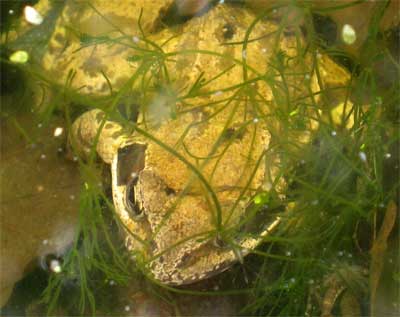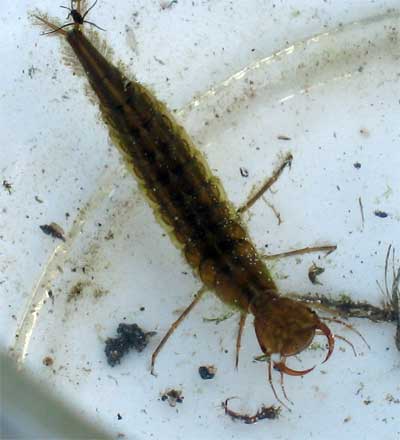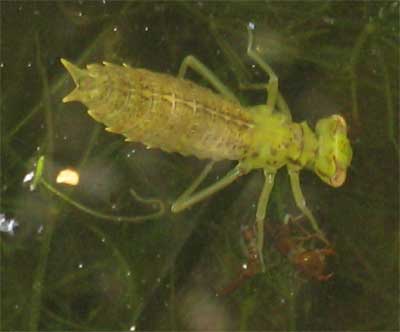Awakenings
By Ruth D’Alessandro, The Wildlife Gardener The Wildlife Gardener doesn’t do January. It’s cold, damp and bereft of creatures and growth. Frustrating too, as the seed catalogues and packets arrive full of pictures and promise of luscious veg to get planting and sprouting, but then it’s at least two months before anything can be usefully sown.

Washing flower pots, emptying compost bins and planting early broad beans in pots (some of which mice ate) are about the limits of gardening activities in January. Anoraky things like plot rotation planning on graph paper can be done, but that is nowhere near as satisfying as being outside in wellies, wielding spades and machinery. February used to be just like January, and the Wildlife Gardener liked it even less. But in recent years, it has been the herald of spring. If that’s what climate change has done to February, bring it on! Last year February was unseasonably warm, and this year it has been unseasonably sunny. I ambled past daffodils and crocuses to the Wildlife Pond this week, and almost leapt backwards in surprise as it churned like a jacuzzi.

Last week’s sheet of covering ice has gone and the pond is full to the brim with fresh-out-of-hibernation copulating amphibians: pairs of frogs and wall-to-wall newts gettin’ it on. A huge great diving beetle (Dytiscus marginalis) motorlaunched past. With the presence of all this fauna, I couldn’t resist getting a net out and prodding around in a quiet bit of the pond. And what a fearsome creature I pulled out:

It’s the larva of the great diving beetle. And yes ” those are not the jaws of a vegetarian. This is a voracious predator, feeding on tadpoles and larvae of various other pond dwellers. The most scary predator in the pond? Maybe. But then on further inspection, a nearby dragonfly larva had obviously eaten one for breakfast:

I should clarify that here this dragonfly nymph is large and the beetle larva small. If it had been the other way round, the beetle larva would have been satiated with a meal of juicy small dragonfly flesh. Something had to feed today. So let’s hear it for the dragonfly. Beautiful, fragile, aerobatic. Able to withstand extremes of temperature: I threw some pondweed and lots of grass clippings into my super-hot composting bin last year. After a week I lifted the lid, recoiling from the heat and steam shimmering up from the rapidly-cooking mass. When the vapour cleared, a pair of plaintive compound eyes stared up at me. A dragonfly nymph, obviously imported in the pondweed, had fought its way up through the heated clippings, survived the temperature, and was ready to go home. I released the little naiad back into the pond. As it swam robustly away, none the worse for being semi-sautéed, I knew just how these remarkable creatures have survived for 300 million years.
- Spurn Spawn! - 26th February, 2014
- Bluebells on wheels: axles of evil? - 2nd February, 2011
- Raising the ba: Wildlife and the Ancient Egyptian Book of the Dead - 8th January, 2011

I live in central Scotland have a large wild life pond also keep fish, trout in the pond I have identified the larva of great diving beatle in the pond will this give me ploblems when I introduce new stock such as brown trout which is native to our area. I would probably put in about half pound fish I would like to get a good balance in the pond but worry about this carnivore eating the young fish. can you advise
Redards Alex
The Ranger responds: Brown trout would be native to flowing rivers, but less likely to be found naturally in smaller ponds. So introducing trout where they would not naturally be will inevitably cause some change in the ecosystem. Whereas if you have diving beetles in there, assuming you didn’t put them there yourself they are indeed natural, and there’s not much you can do about it really. I’d put the trout in if that’s your intention, and see what happens. If you are intending to feed the fish then probably the extra nutrients will change the natural wildlife balance anyway and the beetles will probably move off, take a look at any commercial fishing lake to see.
I’m already folonwilg you on twitter & like you on fb! lol It would be hard for me to eat an insect, as I won’t even kill the venomous spiders that live around here ~ if I find them in the house, I catch them & relocate them to a safe area outdoors. About the only insects I do kill are the fleas & ticks that get on my pets & rescue animals. I guess if I absolutely had to, I would try the fried crickets or grasshoppers I’ve seen on various shows.
I’ve generally seen them early in the afternoon: I guess that gives their wings time to unfurl and dry out. Also, the insects upon which they feed would be active, so they can make a maiden feeding flight.
Do send some pics – we love photos at naturenet.
That,s great, do dragonflies change from their lavae stage at any particular time ie: at night or do they need the sun to dry off their wings.
I will try to get some digital pictures and post them to the site.
cheers Terry.
That’s a big larva, Terry, possibly an Emperor. As dragonfly larvae can stay in a pond for some years, moulting as many as 12 times, my guess is your monster is nearing its last moult and will very soon remove itself from your pond as an adult dragonfly. Watch out for that if you have reeds/vegetation in your pond. It is spectacular watching the wings unfurl. Your fish will lay plenty of spawn to continue the species AND feed the predators.
Virtual Ranger – do you agree?
I have discovered a fearsome creature living in my garden pond, it is approx 75mm long and had a newt in its jaws, the newt was well and truly dead, and the nymph was well and truly fat, could this be an Emperor dragonfly lavae?
If so should I remove it and does it cause a threat to the fish as they are spawning?
Quite excited of Cheshire.